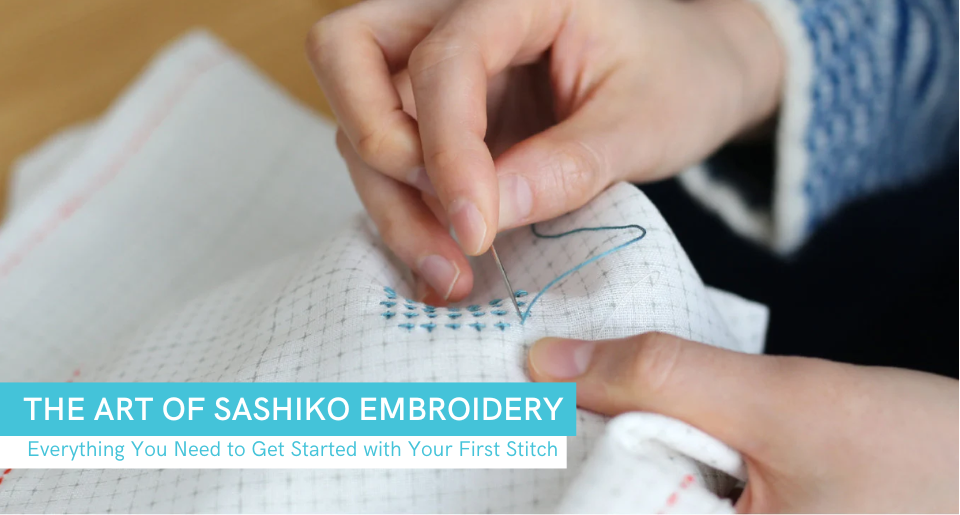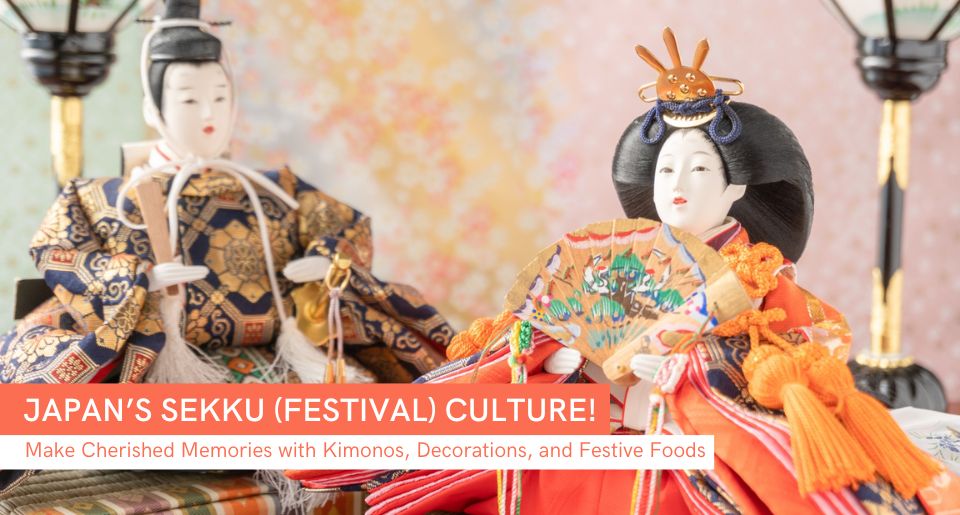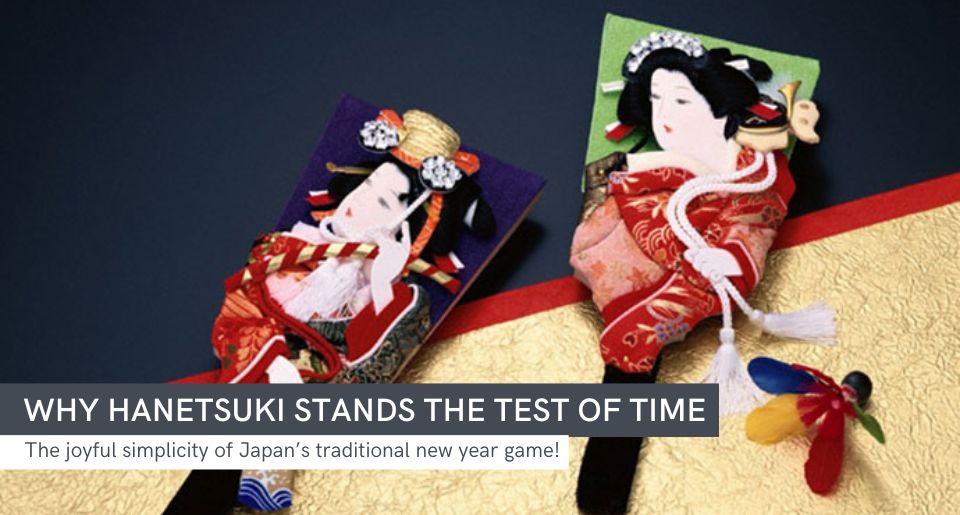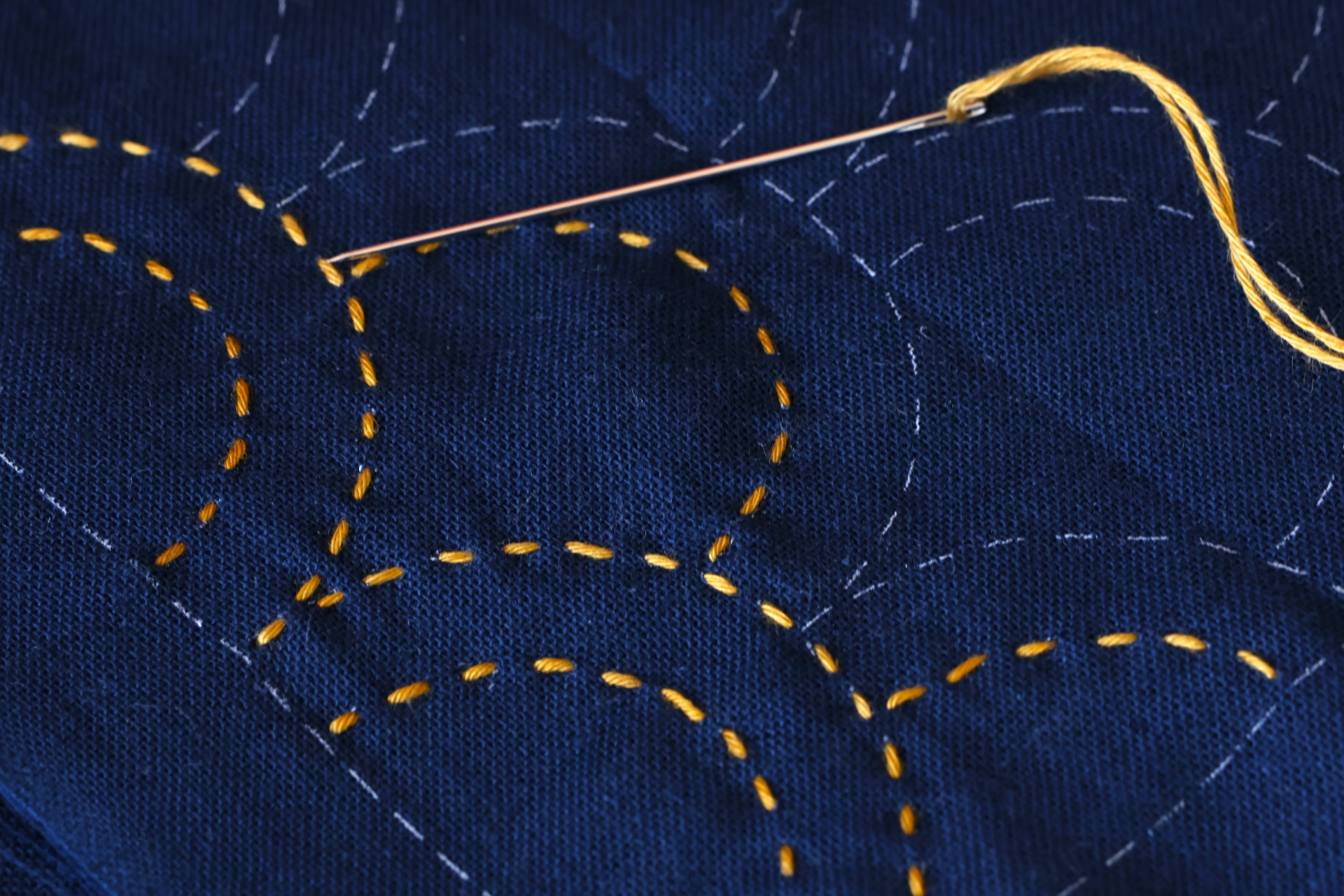
Everyone's stitching Sashiko (刺し子)—join the club!
This traditional Japanese embroidery is weaving its way into hearts worldwide. More and more, we're seeing detailed guides and books dedicated to this art form hitting the shelves, and even specialized tools available now than ever before.
Ready to start your own thrilling and addictive journey with Sashiko? Let's dive into what you need to know to get started!
The Beauty of Little Stabs
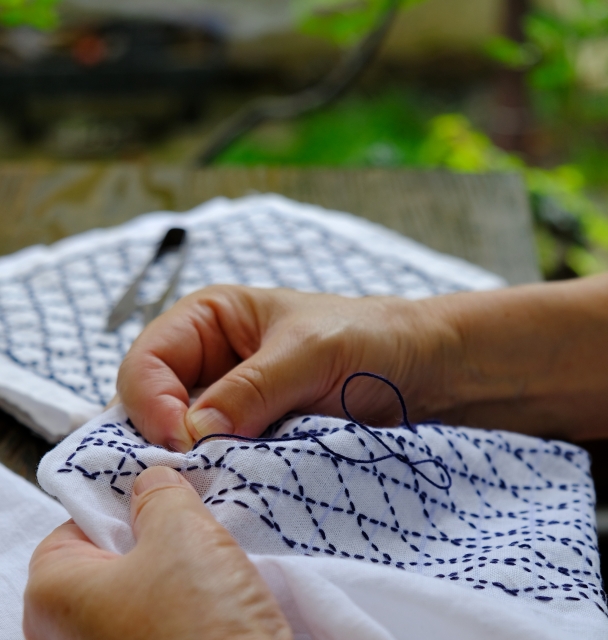
Sashiko, meaning "little stabs" in Japanese, is all about turning simple stitches into stunning art. Historically, it used white cotton threads on indigo-dyed cloth, creating those iconic white-on-blue designs, but occasionally, they’d throw in some red thread for a little extra flair.
Today, Sashiko is woven into an impressive variety of products—from stylish clothing and accessories to chic home textiles like blankets, rugs, and even artistic wall pieces!
From Mending to Artistic Expression
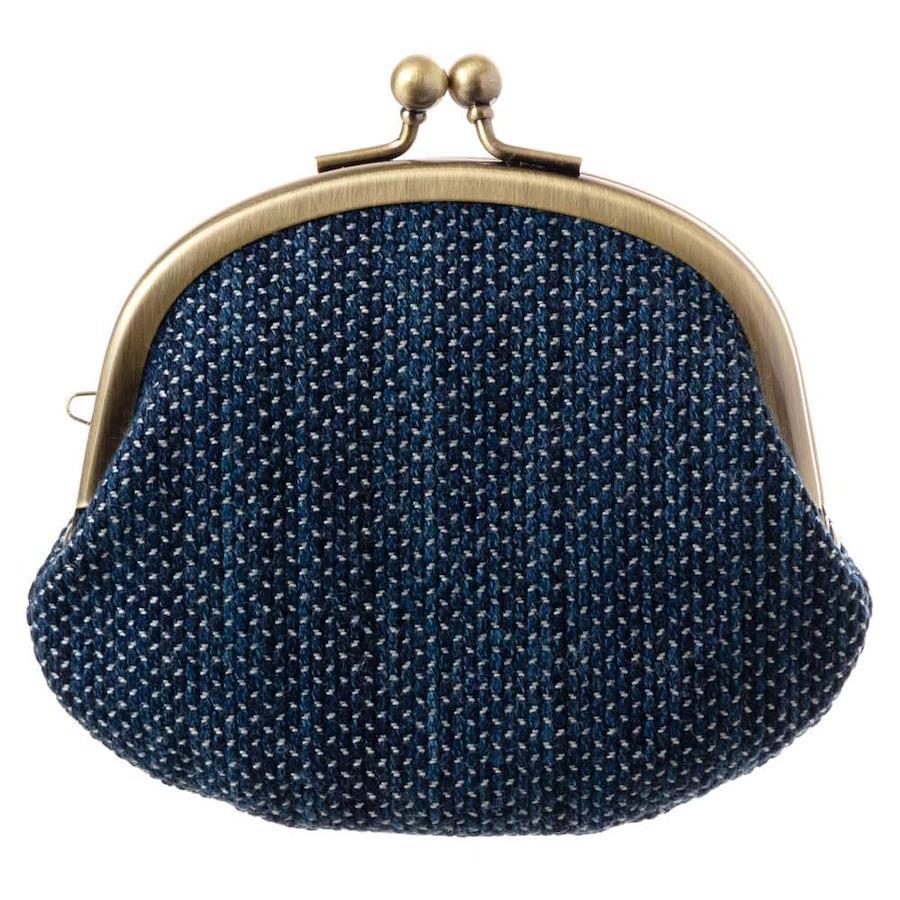
Indigo dyed sashiko woven purse featured on ZenPlus
Originating during the Edo period (1603-1867), Sashiko was first a practical solution for strengthening worn-out clothing. Early on, people used this technique to stitch together worn garments using simple running stitches, making them tougher and longer-lasting.
By the time the Meiji period rolled around (1868-1912), Sashiko had become a staple winter activity in northern farming communities—ideal for those chilly days indoors. It wasn't just about mending; it involved fortifying clothes at weak spots and layering thin fabrics for extra warmth.
Over time, the utility of Sashiko expanded to include decorative elements, creating beautiful patterns that adorned quilts and more.
Sashiko Is Not Your Everyday Stitching Technique!
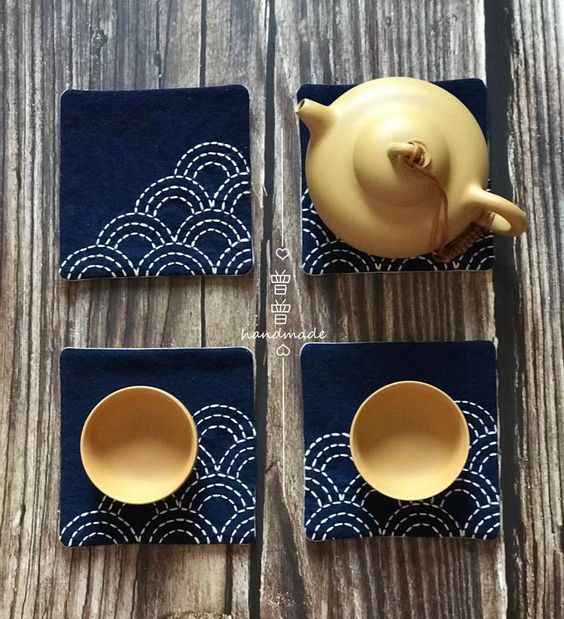
Image source: Pinterest
If you're not exactly an embroidery pro yet, the Japanese technique of Sashiko might just catch you off guard.
This unique form of embroidery is not your typical Western stitching—think bigger, like the needles with their large eyes designed for thick cotton thread, and they're longer too, which means they last longer. As for the thread, it’s not made up of strands; instead, it’s twisted from fine threads to create one durable piece.
How to Start Your Sashiko Journey
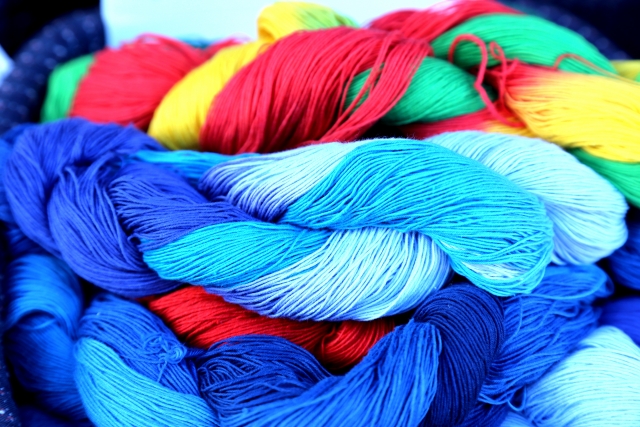
If you're ready to start your Sashiko journey and maybe even turn it into a hobby or a paying gig, there are tons of resources to get you started. Check out books like The Basics of Sashiko, where experts reveal the easiest ways to get those stitches just right.
You'll also need the essential tools to start—thread, a needle, fabric, a thimble, and pattern tracing equipment. Lucky for you, all these essentials are just a click away on ZenPlus, where over 5 million Japanese items from more than 3,000 local retailers are at your fingertips.
No need to book a flight to Japan—all your Sashiko supplies (and more) can fly directly to you and arrive right at your doorstep!
About the Writer
Meet Mariam - a freelance writer whose heart beats for the captivating world of Japanese culture. She's fascinated by the breathtaking cherry blossom trees, the irresistible traditional dishes and snacks, the timeless fashion, the adorable natural makeup, and of course, the world-famous anime, just to name a few of her passions. Now, with boundless creativity and determination, she aims to deliver the most valuable content for readers to offer them a glimpse into her passions in life.

